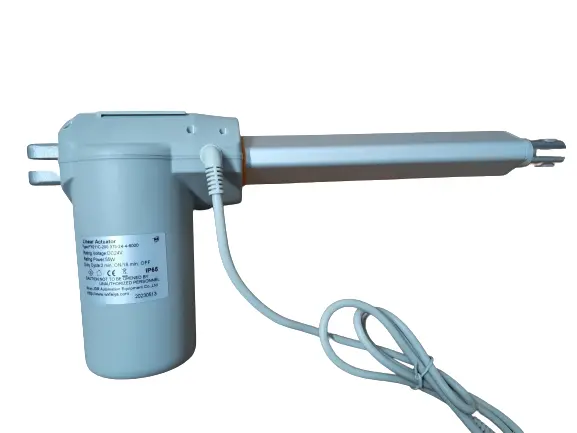Kathir Sudhir Automation India is a premier provider of electric actuators for foldable staircase, delivering dependable solutions for seamless automation and improved safety.
In recent years, advancements in technology have revolutionized various industries, particularly in enhancing safety and accessibility for everyday activities. One fascinating application of modern technology is the integration of electric actuator into foldable staircases, particularly in healthcare settings and homes. This innovation not only addresses safety concerns but also contributes to the convenience and mobility of individuals, especially older adults and those with limited mobility.
Understanding Electric Actuator
Before delving into the specifics of how electric actuators are utilized in foldable staircases, let’s first understand what electric actuators are and how they function. Electric actuators are devices designed to create linear motion by converting electrical energy into mechanical movement. They serve as crucial components in various systems, ranging from industrial automation to healthcare equipment.
Benefits of Electric Actuators for Foldable Staircase
Foldable staircases equipped with electric actuators offer several notable advantages, especially in environments like hospitals, nursing homes, and private residences:
- Enhanced Accessibility: One of the primary benefits is improved accessibility for individuals with mobility challenges. By incorporating electric actuators, foldable staircases can be easily adjusted or deployed to facilitate movement between floors, providing a safe and efficient means of navigation.
- Safety Features: Safety is paramount, especially in healthcare facilities and homes with elderly residents. Electric actuators enable controlled and smooth movement of the staircases, minimizing the risk of accidents such as slips and falls.
- Space Optimization: Foldable staircases with electric actuators are designed with space efficiency in mind. They can be conveniently stowed away when not in use, optimizing floor space and ensuring practicality in various settings.
- Customization and Control: Electric actuators allow for customizable control options, such as adjustable speed and position settings. This flexibility caters to diverse user needs and preferences, making the staircases suitable for a wide range of applications.
Application in Healthcare Settings

The integration of electric actuators in foldable staircases holds particular significance in healthcare settings:
- Patient Safety: For patients in hospitals and nursing homes, foldable staircases with electric actuators offer a safe and efficient way to navigate different levels of the facility, reducing the risk of falls and injuries.
- Ease of Use: Healthcare professionals benefit from the convenience of deploying and storing these staircases as needed, enhancing workflow efficiency and patient care.
Promoting Home Safety and Independence
In residential environments, especially for older adults aging in place, electric actuator-enabled foldable staircases promote independence and safety:
- Preventative Measures: Given that many falls among older adults occur at home, foldable staircases with electric actuators can be a proactive measure to reduce such incidents.
- Convenience: Individuals with limited mobility can navigate their homes more easily and independently, thereby improving their overall quality of life.
The Future of Assistive Technology
The integration of electric actuators into foldable staircases represents a glimpse into the future of assistive technology. By leveraging innovations in engineering and design, manufacturers can continue to develop solutions that prioritize safety, accessibility, and user experience.
Conclusion
In conclusion, the incorporation of electric actuators into foldable staircases is a compelling application of modern technology that significantly enhances safety and accessibility, particularly in healthcare settings and residential environments. As we strive to create more inclusive and user-friendly spaces, innovations like these play a pivotal role in empowering individuals with mobility challenges and improving overall quality of life. This intersection of technology and healthcare exemplifies the potential of assistive technologies to transform everyday environments into safer, more accommodating spaces for everyone.
